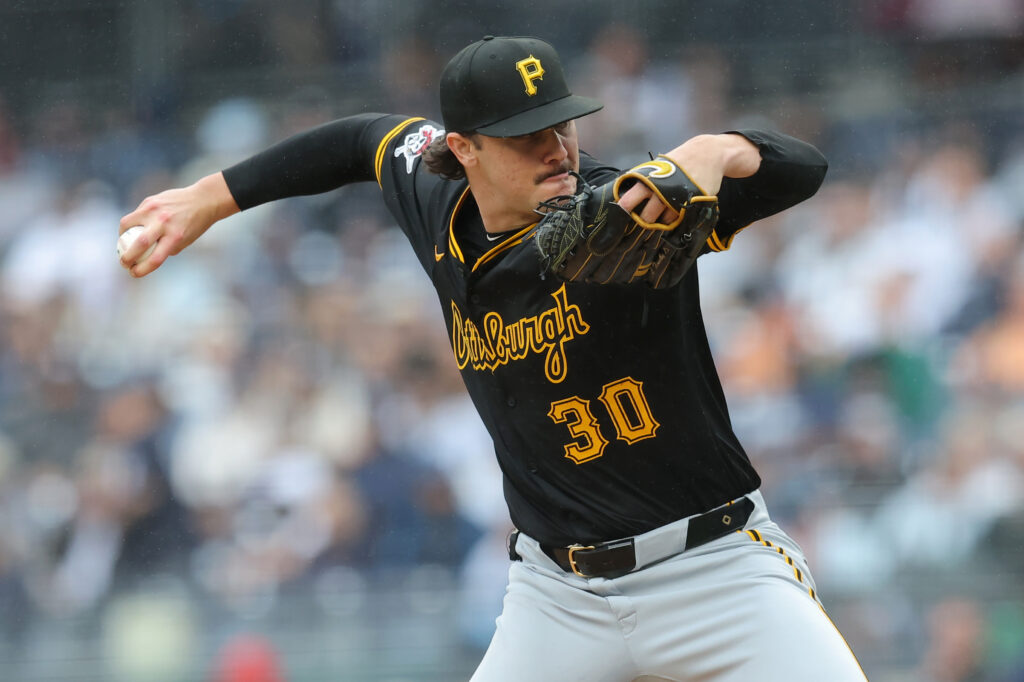The Prospect Promotion Incentive was instituted as part of the latest collective bargaining agreement prior to the 2022 season. As the name implies, it’s designed to incentivize teams to more quickly promote their top prospects to the majors and avoid service time manipulation to gain a seventh year of team control over a given player. If an eligible player wins the Rookie of the Year award or is a finalist for either the MVP or Cy Young award before he reaches arbitration eligibility, then his team will be awarded a pick immediately after the first round of the following year’s draft.
Over the first three years of the incentive’s existence, four players have earned a PPI pick for their team: Julio Rodriguez, Gunnar Henderson, and Corbin Carroll all did so by winning their league’s Rookie of the Year award, while Bobby Witt Jr. did so last year by finishing second in AL MVP voting. That’s more than one player per year bringing in an extra pick for their team, and that collection of some of the league’s brightest young stars would have otherwise been prime candidates for service time manipulation; all were viewed as among the game’s best prospects, and all except Carroll had not yet signed an extension with their club although both Witt and Rodriguez would do so later on. The Mariners, in particular, had a history of manipulating service time with their best prospects including a controversy surrounding their handling of then-top prospect Jarred Kelenic.
In the cases of Rodriguez, Henderson, and Witt, the club in question evidently felt that the combination of a potential PPI pick and a full season of their top prospect in the majors was the better choice to pursue than the possibility of a seventh year of team control. The fact that players who finish in the top-two of Rookie of the Year voting are awarded a full year of service time even if they have not yet reached 172 days naturally surely factors into that calculation as well; the Pirates held star right-hander Paul Skenes back from their Opening Day roster and ended up with the worst of both worlds when he won the NL Rookie of the Year award last year. Not only did they not receive a PPI pick for Skenes’s win after he wasn’t included on their roster to begin the year, but his win cost them that extra year of team control gained by holding him back in until May anyway. 2015 NL Rookie of the Year Kris Bryant surely would’ve appreciated the opportunity to get that same bump in service time and move his free agency up to the 2020-21 offseason.
Not all instances of the PPI’s influence are quite this cut-and-dry, however. One recent trend regarding PPI-eligible prospects has been for clubs to put potential Rookie of the Year candidates on their Opening Day roster (or promote them early enough in the season so that they retain PPI eligibility) before giving them a short run in the majors and optioning them to the minor leagues if they don’t excel. The Cubs recently did exactly this with top infield prospect Matt Shaw, who was promoted back today after making the Opening Day roster, struggling in 18 games, and then spending a month at Triple-A. The Orioles have used this tactic when handling the promotions of Grayson Rodriguez and Jackson Holliday, as well.
Exactly how much those demotions had to do with service time and how much they had to do with performance can be debated, but it’s a method that allows a team to essentially hedge their bets by only extracting that extra year of team control once the PPI-eligible player has struggled enough in the majors to make a top-two finish in Rookie of the Year voting extremely unlikely. Aside from those cases, there are also some teams that seem completely undeterred from holding down their top prospects by the PPI. The aforementioned Pirates fall into this group even after the debacle with Skenes last year, as they’ve shown no inclination towards promoting top pitching prospect Bubba Chandler despite his dominance at Triple-A and the club’s struggles at the big league level.
How do MLBTR readers view the incentive? Has it been a success because it’s allowed players like Skenes to earn a full year of service while getting players like Henderson the opportunity to break camp with the big league team on Opening Day of their rookie seasons? Or is the fact that players like Chandler are still being held down in the minors while players like Shaw and Holliday have been sent back to Triple-A once they’re no longer good bets to bring in a PPI evidence enough that the system is ineffective? Have your say in the poll below:
Take Our Poll Read More Details
Finally We wish PressBee provided you with enough information of ( Poll: How Effective Has The Prospect Promotion Incentive Been? )
Also on site :
- Are US-Israel ‘special relations’ about to end?
- Putin tells Trump: Russia is ready to ceasefire with Ukraine
- Western warning to Israel: Halt Gaza offensive or face sanctions

